Please note: This post is about accommodation in Cuenca, Spain. Click the following link for the best areas to stay in Cuenca, Ecuador.
Where to Stay in Cuenca: A Guide to the City of the Hanging Houses
Cuenca is a city and provincial capital located in Castilla-La Mancha, about 165 kilometres east of Madrid. This ancient town is located on a rocky hill bordered by the gorges of the Júcar and Huécar rivers and is mainly known for its monumental Old Town, home to the famous Hanging Houses of Cuenca and a World Heritage Site by UNESCO. In this post, we will explore the best areas to stay in Cuenca, Spain.
Why you should visit Cuenca
With a history that dates back to the Upper Paleolithic and the Celtiberian peoples that inhabited the peninsula, Cuenca began to gain importance from the 8th century onwards with the construction of the Qūnka Castle by the Moors. At the end of the 12th century, the city was conquered by the Christian King Alfonso VIII, who granted it the Fuero de Cuenca, a compilation of civil, commercial and criminal laws that would lay the foundations for medieval legislation throughout the peninsula. For centuries to come, Cuenca’s economy was based on the textile industry, which contributed to the wealth of the city and financed the construction of the beautiful churches, squares and palaces that we see today.
Today, Cuenca is an eminently tourist city and one of the most visited inland destinations in Spain. Its beautiful and well-preserved old town and its status as a World Heritage City attract thousands of tourists from all over the world every year. Some of the most important tourist attractions in Cuenca’s city centre include the famous Hanging Houses; a group of houses perched from the cornice of a river gorge, the Cuenca Cathedral; one of the first examples of Gothic architecture in Spain and the San Pablo Bridge; a beautiful iron bridge from the early 20th century. Find accommodation in Cuenca’s Historic City Centre.
Cuenca is also an important cultural centre, this Spanish city is home to a large number of museums. Among the most outstanding museums in Cuenca are the Museum of Spanish Abstract Art, the Museum of Sciences of Castilla-La Mancha, the Museum of Cuenca and the Paleontological Museum of Cuenca.
About 27 kilometres northeast of Cuenca, in the middle of the Serranía de Cuenca Natural Park is the Enchanted City (La Ciudad Encantada), a collection of calcareous rock formations that, after the passage of millions of years, have taken on whimsical and curious shapes. The 3-kilometre route through the Enchanted City allows you to see rock formations with such unique names as “High Totem”, “The Dog”, “The Slide” or “Crocodile Fighting Elephant”.
Other must-see natural attractions near Cuenca include the Nacimiento del Río Cuervo Natural Monument, Cerro del Socorro, El Escalerón, Torcas de Palancares and Tierra Muerta, the Talayuelas Canyon and Hoces del Cabriel Natural Park .
What’s the best time to visit Cuenca
Due to its geographical location in the centre of Spain and its high altitude, Cuenca has a continentalized Mediterranean climate, with great thermal amplitude between day and night conditions. Temperatures are usually cold in the winter and mild in the summer. In January, temperatures usually range between -1 and 9 ºC. Meanwhile, in July the average temperatures can range from 15 to 31 ºC. The best time to visit Cuenca is during late spring, summer and early fall (from May to October) when temperatures are pleasant for sightseeing and outdoor activities.
Cuenca: Getting there and around
To get to Cuenca by plane, the most convenient airport is Adolfo Suárez Madrid–Barajas (MAD). Located 170 kilometers northwest of Cuenca, this major intercontinental hub offers flights to practically every corner of Spain and Europe, as well as excellent connections to Latin America, North America, the Middle East and Asia. Another international airport relatively close to Cuenca is Valencia Airport (VLC), 190 kilometres east.
Cuenca also has excellent train connections. Cuenca station, located near the historic centre, has regional services on the Madrid – Valencia line. On the other hand, Cuenca also has AVE high-speed train connections, Cuenca Fernando Zóbel station is located about 6 kilometres south of the city and has AVE connections to Madrid, Valencia and Albacete, as well as medium and long distance services on the Madrid-Castellón de la Plana, Alicante-Gijón and Seville-Valencia lines. Check train schedules, routes & fares.
To move between Cuenca and the different parts of the province, the most convinient thing to do is renting a car. To get around the city, Cuenca has several urban bus routes (including one that connects both train stations) and taxis.
Where to stay in Cuenca
The best area to stay in Cuenca is the Historic City Centre. Cuenca’s Old Town is home to the famous Hanging Houses and the main historical attractions, the best museums, an excellent food and nightlife scene and some of the best-rated accommodations in the city. The city centre is also very well connected by bus and you can walk to most attractions. Find accommodation in Cuenca’s Old Town.
Another excellent area to take into account when choosing the best location in Cuenca for tourists is around the Cuenca railway station.
Keep on reading to learn more about the best areas to stay in Cuenca, Spain.
Cuenca is a city and provincial capital located in Castilla-La Mancha, about 165 kilometres east of Madrid. This ancient town is located on a rocky hill bordered by the gorges of the Júcar and Huécar rivers and is mainly known for its monumental Old Town, home to the famous Hanging Houses of Cuenca and a World Heritage Site by UNESCO. In this post, we will explore the best areas to stay in Cuenca, Spain.
Why you should visit Cuenca
With a history that dates back to the Upper Paleolithic and the Celtiberian peoples that inhabited the peninsula, Cuenca began to gain importance from the 8th century onwards with the construction of the Qūnka Castle by the Moors. At the end of the 12th century, the city was conquered by the Christian King Alfonso VIII, who granted it the Fuero de Cuenca, a compilation of civil, commercial and criminal laws that would lay the foundations for medieval legislation throughout the peninsula. For centuries to come, Cuenca’s economy was based on the textile industry, which contributed to the wealth of the city and financed the construction of the beautiful churches, squares and palaces that we see today.
Today, Cuenca is an eminently tourist city and one of the most visited inland destinations in Spain. Its beautiful and well-preserved old town and its status as a World Heritage City attract thousands of tourists from all over the world every year. Some of the most important tourist attractions in Cuenca’s city centre include the famous Hanging Houses; a group of houses perched from the cornice of a river gorge, the Cuenca Cathedral; one of the first examples of Gothic architecture in Spain and the San Pablo Bridge; a beautiful iron bridge from the early 20th century. Find accommodation in Cuenca’s Historic City Centre.
Cuenca is also an important cultural centre, this Spanish city is home to a large number of museums. Among the most outstanding museums in Cuenca are the Museum of Spanish Abstract Art, the Museum of Sciences of Castilla-La Mancha, the Museum of Cuenca and the Paleontological Museum of Cuenca.
About 27 kilometres northeast of Cuenca, in the middle of the Serranía de Cuenca Natural Park is the Enchanted City (La Ciudad Encantada), a collection of calcareous rock formations that, after the passage of millions of years, have taken on whimsical and curious shapes. The 3-kilometre route through the Enchanted City allows you to see rock formations with such unique names as “High Totem”, “The Dog”, “The Slide” or “Crocodile Fighting Elephant”.
Other must-see natural attractions near Cuenca include the Nacimiento del Río Cuervo Natural Monument, Cerro del Socorro, El Escalerón, Torcas de Palancares and Tierra Muerta, the Talayuelas Canyon and Hoces del Cabriel Natural Park .
What’s the best time to visit Cuenca
Due to its geographical location in the centre of Spain and its high altitude, Cuenca has a continentalized Mediterranean climate, with great thermal amplitude between day and night conditions. Temperatures are usually cold in the winter and mild in the summer. In January, temperatures usually range between -1 and 9 ºC. Meanwhile, in July the average temperatures can range from 15 to 31 ºC. The best time to visit Cuenca is during late spring, summer and early fall (from May to October) when temperatures are pleasant for sightseeing and outdoor activities.
Cuenca: Getting there and around
To get to Cuenca by plane, the most convenient airport is Adolfo Suárez Madrid–Barajas (MAD). Located 170 kilometers northwest of Cuenca, this major intercontinental hub offers flights to practically every corner of Spain and Europe, as well as excellent connections to Latin America, North America, the Middle East and Asia. Another international airport relatively close to Cuenca is Valencia Airport (VLC), 190 kilometres east.
Cuenca also has excellent train connections. Cuenca station, located near the historic centre, has regional services on the Madrid – Valencia line. On the other hand, Cuenca also has AVE high-speed train connections, Cuenca Fernando Zóbel station is located about 6 kilometres south of the city and has AVE connections to Madrid, Valencia and Albacete, as well as medium and long distance services on the Madrid-Castellón de la Plana, Alicante-Gijón and Seville-Valencia lines. Check train schedules, routes & fares.
To move between Cuenca and the different parts of the province, the most convinient thing to do is renting a car. To get around the city, Cuenca has several urban bus routes (including one that connects both train stations) and taxis.
Where to stay in Cuenca
The best area to stay in Cuenca is the Historic City Centre. Cuenca’s Old Town is home to the famous Hanging Houses and the main historical attractions, the best museums, an excellent food and nightlife scene and some of the best-rated accommodations in the city. The city centre is also very well connected by bus and you can walk to most attractions. Find accommodation in Cuenca’s Old Town.
Another excellent area to take into account when choosing the best location in Cuenca for tourists is around the Cuenca railway station.
Keep on reading to learn more about the best areas to stay in Cuenca, Spain.

The Best Areas to Stay in Cuenca, Spain
1. Recommended area: Old Town
Cuenca’s Old Town is located in the upper part of the city, on the rocky hill between the gorges of the Júcar and Huécar rivers.
This charming historical area, a UNESCO World Heritage Site, is characterized by its cobbled winding streets and is home to most of Cuenca’s tourist attractions.
Probably the most important attraction here, and the symbol of the city of Cuenca, the Hanging Houses (Casas Colgantes) are a group of civil buildings on the eastern edge of the old city, next to the Huécar river gorge. These houses with large balconies, built cantilevered over the precipice, date from the 15th and 16th centuries and currently house the Museum of Spanish Abstract Art.
Not far away is the Cuenca Cathedral, one of the first examples of a Gothic-style church in Castile. Although the origins of this church, dedicated to the Virgin and San Julián, date back to the 12th century, its internal and external appearance underwent modifications over time. After a collapse in 1902, the façade was rebuilt following the original Gothic style.
The nearby Plaza Mayor de Cuenca, unique for its irregular shape, is one of the main food and nightlife centres in the city, with numerous bars, restaurants and terraces.
The Alfonso VIII street crosses most of the old town and connects the main square with other attractions of the city such as the “skyscraper” of San Martín, the Tower of Mangana or the Museo de la Semana Santa.
At the eastern end of the historic centre lie the ruins of the Cuenca Castle, the remains of the city’s Muslim fortress. The area the castle is the oldest barrio in Cuenca and holds attractions such as the old wall, Plaza del Trabuco, the Antonio Pérez Foundation and several viewpoints and hiking trails.
The historic city centre of Cuenca is very compact and, except for its slopes, it is very easy to explore on foot. Additionally, the area is connected by the L2 line of the local bus, which connects the castle with Plaza de la Constitución and the New Town.
As is to be expected, the old centre of Cuenca is also home to the largest number of accommodations in the city. This district stands out for its beautiful luxury hotels, some located in renovated ancient buildings, but it also offers dozens of family-run inns and tourist apartments with spectacular views.




Why is this a recommended area to stay in Cuenca:
- Heart of the city
- Beautiful views
- Hanging Houses
- Variety of hotels
- Cuenca Cathedral
- Restaurants and nightlife
Accommodation in this area
-
Top Choice

Hotel Torremangana
The 4-star Hotel Torremangana is located in the city center, in front of a beautiful park that borders the Júcar river, next to the old town. In addition to the facilities mentioned, all rooms have piped music and a direct dial telephone.
-
Budget
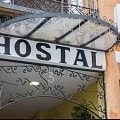
Hostal Calderon Cuenca
Featuring a bar, Hostal Calderon Cuenca is located in Cuenca in the Castilla-La Mancha region, less than 1 km from Mangana Tower and a 20-minute walk from Hanging Houses. The property features a terrace and is close to attractions such as Nuestra Señora de Gracia Cathedral.
-
Luxury

Parador de Cuenca
The luxurious Parador de Cuenca is a perfect place to relax. It offers excellent views of the famous hanging houses, located in front of the hotel. This hotel occupies a former convent and has preserved its original architectural design. The interior patio is ideal to enjoy reading.
2. New Town & Cuenca Railway Station
The RENFE station area is a good district to stay in Cuenca, especially for travellers passing through and those looking for cheap accommodation.
Located south of the city centre, about two kilometres from the cathedral, this station was, for decades, the main access point for tourists to Cuenca. However, after the arrival of the high-speed trains to the city through (much less central) Fernando Zóbel station, Cuenca’s central station has lost importance and travellers.
That said, Cuenca station still offers regional Media Distancia train services on the Madrid-Valencia line. In addition, this railway stop is very close to the Fermín Caballero bus station, making it a convenient area to access other nearby areas and cities.
The advantage of staying near the RENFE station is that it has a wide variety of restaurants, hotels at different costs and some bars.
Nearby is also the Paleontological Museum of Castilla La Mancha, with excellent exhibits of dinosaur fossils and interactive exhibits.


Why is this a recommended area to stay in Cuenca:
- RENFE Station
- Parks and green areas
- Quiet & family-friendly area
Read in other languages:
|ES|Dónde alojarse en Cuenca, España.







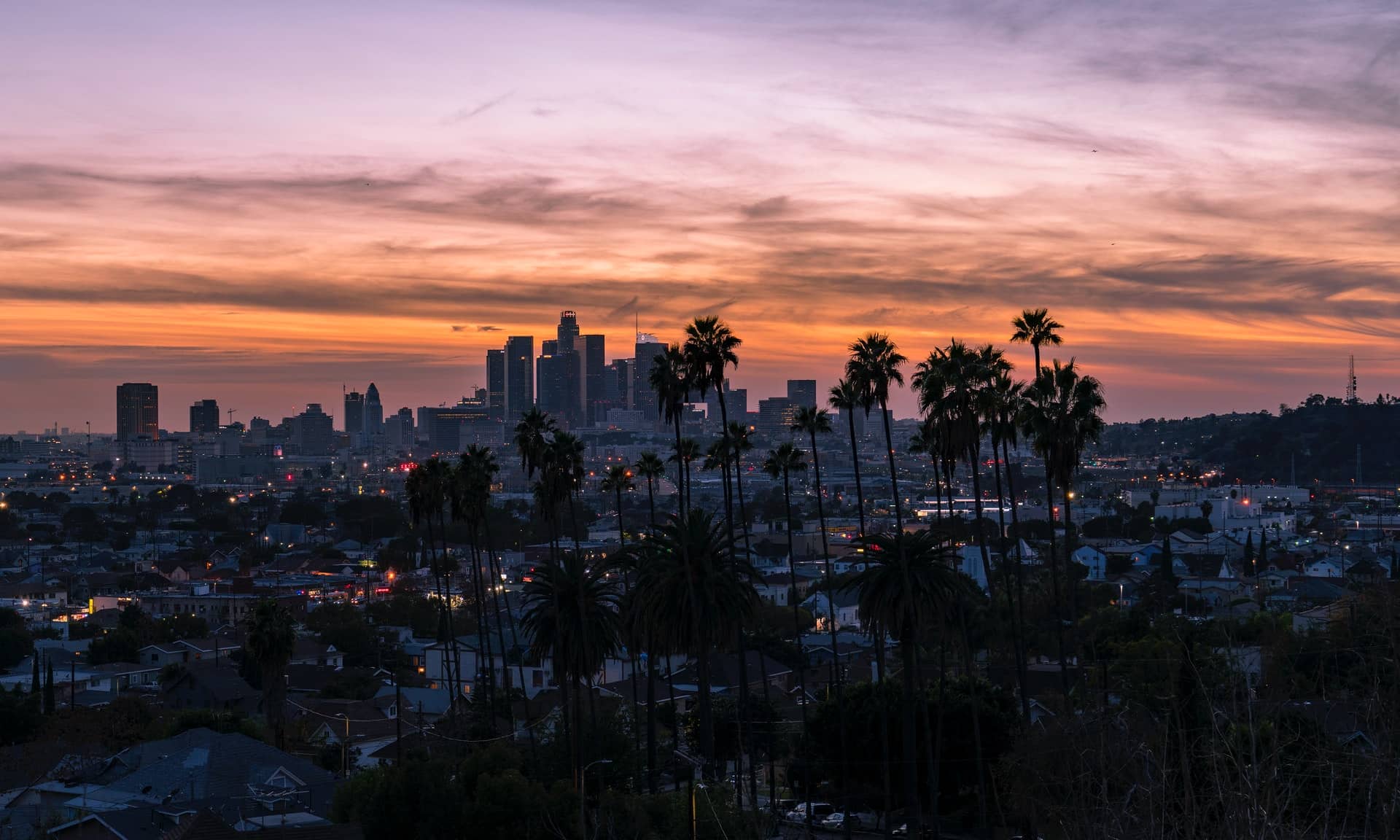

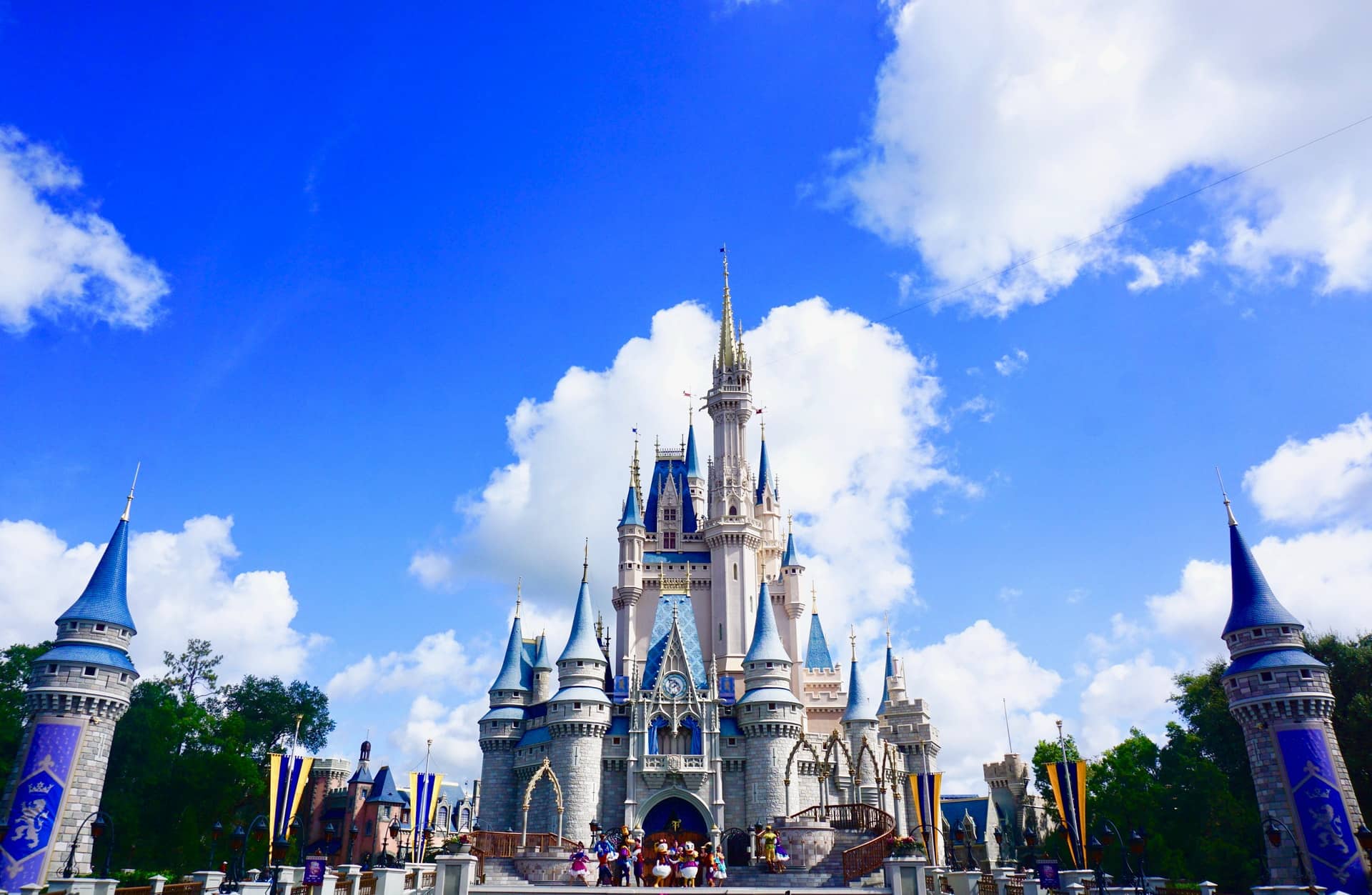








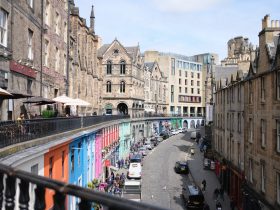





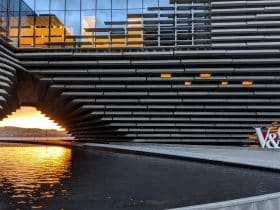
Leave a Reply
View Comments